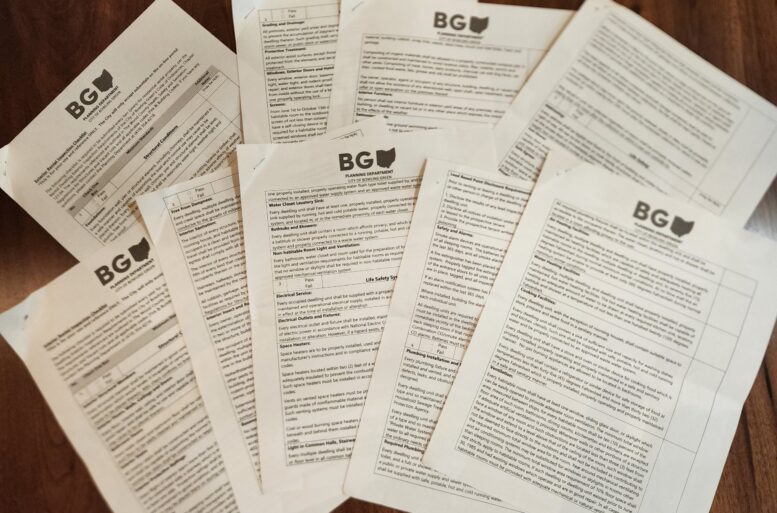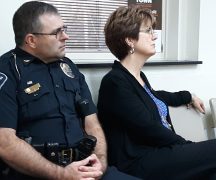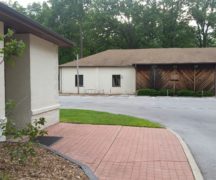By JAN LARSON McLAUGHLIN
BG Independent News
When Bowling Green officials adopted regulations for rental housing properties in 2021, city leaders took heat from landlords saying rental registrations and inspections were unnecessary and would end up costing the tenants.
When city officials agreed to accept self-inspections rather than third-party inspections of rental units, they took some criticism from citizens who lacked trust in landlords and voiced concern about the safety of rental housing in the city.
And now, two years later, with the deadline for rental inspections coming near, the city is hearing from landlords that the self-inspection requirements are too onerous.
At the last City Council meeting, Mayor Mike Aspacher plus council members Bill Herald and Mark Hollenbaugh reported hearing from landlords unhappy with the requirements of the self-inspections.
“We’ve heard the same concerns,” Aspacher said. “We are open to reassessing the forms and timelines. We want a process that’s not overly burdensome to the property owners.”
The mayor said city officials would meet with local landlords to get their feedback, and report back to City Council at its Monday (Oct. 2) meeting. An ordinance is on council’s agenda to delay the deadline for interior inspection reports by a year, from Oct. 1, 2023 to Oct. 1, 2024.
The inspections forms are available on the city’s website at https://www.bgohio.org/671/Rental-Inspections.
Hollenbaugh, the council president, agreed the inspection forms cover many items – but his overriding concern is the safety of tenants.
“I have some sympathy – but not much,” Hollenbaugh said of landlord complaints about the inspection requirements.
Aspacher suggested the city accept incremental progress on the inspection process. “We need to take some time to figure out what is working and what isn’t working.”
“If there was an obvious and easy solution, it would have been implemented years ago,” Aspacher said. “This is a work in progress. I have no illusions it will solve all the issues.”
At the same time, “the city has a role ensuring that housing in the city adheres to standards of health and safety.” That includes all housing, he said, noting that owner-occupied homes are often the focus of citizen complaints.
Landlords’ perspective
Steve Green, liaison to the Northern Ohio Apartment Association and owner of Mecca Management in Bowling Green, said he is not opposed to the city’s new ordinance requiring registration and inspections by the property owners.
Green is, however, concerned about the complexities of the inspection requirements.
“I think we all need to take a step back and take a look at this,” he said.
Green suggested it would be in the best interest of landlords, tenants and the city if the inspection forms were simplified.
With nearly two-thirds of the city housing being rental units, “this needs to be an efficient well-oiled machine,” for it to be manageable by the city, Green said.
And for landlords, the nine pages of requirements need to be easier to fill out – rather than requiring studying of the building codes.
Green suggested that the city adopt a true checklist – where items can easily be ticked off – rather than long paragraphs about requirements. Those longer inspection forms should be used when a landlord doesn’t comply with the initial checklist, he said.
“Then they can go after them,” he said of “problem addresses.”
“I’m just looking at this from a common sense perspective,” he said. “It can’t be a book on each unit. It should be a checksheet.”
Green believes it’s a few landlords in Bowling Green who are making the rules tougher for all of them.
“The rest of us are trying to do a good job,” he said. “We want happy renters.”
Green also voiced objections to the requirements for exterior inspections, since anyone in the community can view exterior problems and report them to the city.
Mecca has 13 full-time maintenance workers, with 70 to 80 work orders a day, Green said. “We’re inspecting every minute of every day,” he said.
Though some landlords in Bowling Green protested the rental registration ordinance, Green said most have complied.
“That’s worked really well,” he said. “We’re not opposed to it. Everybody wants safe housing.”
Others find inspection criteria ‘reasonable’
Not everyone thinks the inspection forms are too onerous – or that landlords should be conducting their own inspections of their properties.
Chris Ostrowski was property manager at the 96-unit Summit Terrace apartment complex in Bowling Green for nearly 25 years. After reviewing the city’s inspection checklist, he approved the requirements on the list.
“I would have been tougher,” Ostrowski said. “Those are minimal standards. If you’re going to rent out properties, you should make sure they are safe and sanitary.”
The items on the checklist should be completed each time new renters move in, he said.
Ostrowski acknowledged that the inspection forms could be simplified, and that it will take a lot of time for landlords with a large number of units. But he added that landlords who comply with the checklists should get in a routine filling them out.
Bowling Green Planning Director Heather Sayler said her office has taken two complaints from landlords about the inspection forms being “onerous.”
The inspection criteria come from the Wood County Health Department. Beth Peery, public health information and education manager with the health department, said the housing code was adopted by the county’s board of health in 1986. “It’s not new,” she said.
Bowling Green Fire Chief Bill Moorman also added a few fire standards to the inspection forms.
“The goal is for a healthy and safe environment for the tenant,” Sayler said.
David Drain, who owns one rental property in the city, said the inspection requirements seem reasonable. He suggested the city hold a workshop for those landlords who want further guidance.
“We need to get it off the ground. It can’t be that hard to do,” Drain said. “I hope we can get the voluntary inspections to be enough.”
Drain, who is campaigning for a seat on City Council, said he has encountered several unsafe rental properties as he has gone door-to-door.
“I go to properties where the stairs are falling apart,” he said.
During public input on the inspection ordinance in 2021, several citizens criticized the city for allowing landlords to inspect their own rental properties.
At public meetings, Joe DeMare accused City Council of being swayed by the “outsized influence” of landlords in the community. The voluntary inspection system is proof, he said, adding that council “bowed to the wishes of the landlords.”
And former City Council member John Zanfardino expressed his dissatisfaction with the ordinance. After years of hearing complaints from tenants about living conditions, and complaints from landlords resisting inspections, Zanfardino said that trust in local landlords should not be automatic.
“I think that’s naive and defies human nature,” he said.
“You can have the best checklist on the planet,” but if property owners aren’t honest, it is meaningless, Zanfardino said. “Without adding some third party inspections at the owners’ expense, we’ll be accomplishing virtually nothing.”
Also during those discussions, council member Jeff Dennis pointed out that of the 59 Ohio communities that require rental inspections, only five allow just self-inspections, and only one charges no fees. Bowling Green is now the second with no fees.
So far, approximately 6,300 rental units have been registered with the city. When the ordinance was adopted, an estimate of 7,200 rental units was floated about, but the fact is that the city does not have an exact number.
Sayler pointed out that changes in ownership and use happen regularly – with the city tracking those as they occur.
The initial deadline to register was the end of 2022. The city attorney has been working on a protocol for fines, and so far, no fines have been issued.
How inspection ordinance works
Bowling Green’s ordinance requires self-inspections to be completed after the owners register every residential unit or structure they are responsible for. The owners are responsible for completing interior and exterior inspections of their rental units, and maintaining the shared or common areas of the premises in safe and sanitary condition.
Inspections can be conducted by the owner, designated agent, or contracted for with a city approved inspector. The results of all inspections must be clearly documented on city supplied and/or approved inspection forms. A copy of the most recent inspection form must also be provided by all owners to all prospective occupants and conspicuously posted and maintained within the residential rental unit in a common area or other area so that the rental registration is visible to occupants and inspectors.
The interior inspections are required annually, while the exterior inspections are due every two years.
Interior inspection checklist covers:
- Structural conditions of interior floors, walls, ceilings and doors; bathroom floors; interior stairs; interior protective railings; windows.
- Healthy living conditions, including free from dampness; interior sanitation; interior insect and rodent infestation; basements as habitable rooms; bathroom sinks, bathtubs and showers; light and ventilation.
- Life safety systems such as electrical service, outlets and fixtures; space heaters; lights in common halls and stairways; lead-based paint disclosure requirements prior to rental of residential property; safety and alarms.
- Building systems including plumbing installation and maintenance; required plumbing fixtures; air heating facilities; water heating facilities; cooking facilities; ventilation.
Exterior inspection checklist covers:
- Structural conditions of foundations, exterior walls, roofs, exterior stairs and porches, exterior protective railings, and accessory structures.
- Healthy living conditions covering such items as grading and drainage; protective treatment from decay; windows, exterior doors and hatchways; screens; gutters and downspouts; exterior insect, rodent or pest infestation; exterior sanitation; interior furniture outside; swimming pools; garbage disposal; refuse storage and disposal facilities.
- Life safety items such as legible address, exit doors, safe egress, private hydrants.
Other cities require inspections
The City of Bowling Green isn’t alone in wanting to make sure rental housing is safe for tenants. Also in Wood County, the City of Rossford has a rental registration and inspection program, which charges penalties of $100 for each week the rental unit is not registered.
Under the Rossford law, landlords who don’t comply with other provisions such as inspections can be fined $100 for the first offense, $500 for the second offense, and $1,000 for a third offense. Owners of rental units are also required to provide access and entry to the zoning inspector at all reasonable times.
The Ohio college towns of Kent and Oxford have rental registration rules. In Kent, all rental housing occupied by four or more unrelated tenants are inspected annually by registered environmental health specialists (sanitarians) to assure that they are conducive to good health and well-being and that they are maintained in a manner that will limit deterioration.
In Oxford, inspections are required every two years to check for property maintenance compliance. Potential tenants, prospective buyers, and other interested parties can check on the inspections by searching the reports online.





